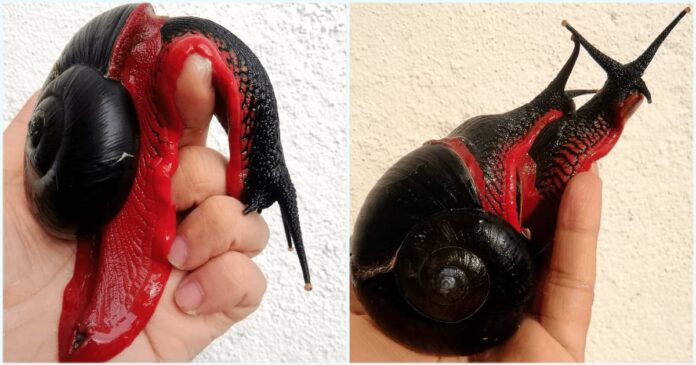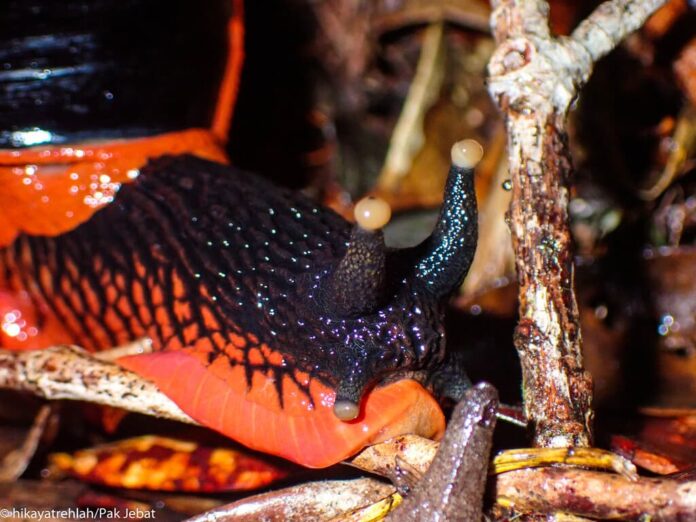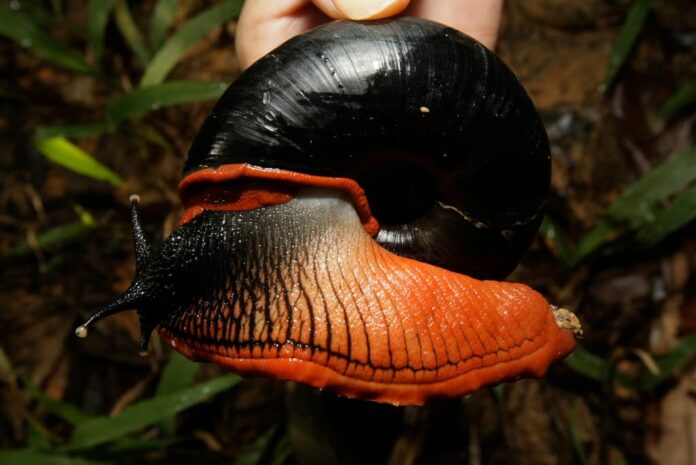Fire snail takes cool appearance to a whole new level, and the pictures say it all. It looks so out of this world that people doubt if it was real or not, and it is! However, fire snails are facing extinction due to their particular way of living and threats to their habitats. Want to learn more about this super cool-looking snail? Check them out below.
1Appearance

Not too hard to recognize, a fire snail has a black shell and body, while the foot is bright red to orange. The fiery color makes it look absolutely stunning, and it is exactly how the fire snail earns its name. Just like most snails, its bulbous eyes are located on the tentacles. Besides the appearance, it is also the largest land snail in Peninsular Malaysia, with a shell size of around 8 centimeters. As for the snail’s flamboyant body, it can reach an impressive length of 20 centimeters.
2Behavior

Fire snails are nocturnal, so they are most active at night. As slow movers, these snails move at a slow pace, covering only a few meters in a day. During the daytime, they usually hide in cool and damp places to avoid dehydration and predators. Fire snails are solitary, and they spend most of their life solitary, and only meet another snail to mate. Not different from other snails out there, they use love darts to shoot into their partners during mating. One of the most interesting things about them is that they also estivate during dry periods. In estivation mode, a fire snail seals itself inside its shell with a layer of mucus to retain moisture.
3Feeding & Habitats

Fire snails live exclusively in the cloud forests and mountainous forests in Peninsula Malaysia, mainly in the Cameron Highlands. However, they are also found near the Temengor Forest Reserve and the Pergau River in Kelantan as well. Fire snails inhabit cool, moist, and shaded environments where the climate is cooler and more humid. The irony with the name. Where they live, fire snails like to dwell in the dark, fallen logs, and dead leaf piles between limestone blocks. Fire snails are scavengers, and they feed on the remains of decomposing plant or animal matter as well as algae and fungi.
Thought they were already extinct, there is still a small population of fire snails that are struggling to survive. This endangered snail species is threatened by habitat loss and poaching. Agricultural expansion, climate change, and deforestation affect their survival greatly. At the same time, humans catch them for the illegal pet trade despite the difficult care due to specific environmental needs. Conservation efforts are urgently needed to protect them before they become extinct, sooner than we think.
Related Post: Volcano Snail Facts




